Marigot, Saint Martin
Marigot is the main town and capital in the French Collectivity of Saint Martin.
Marigot | |
|---|---|
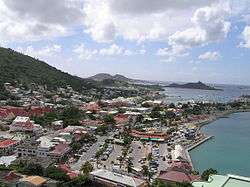 Marigot | |
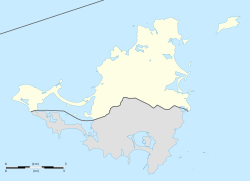 Marigot | |
| Coordinates: 18.0731°N 63.0822°W | |
| Country | France |
| Overseas collectivity | Saint Martin |
| Population (2006) | |
| • Total | 5,700 |
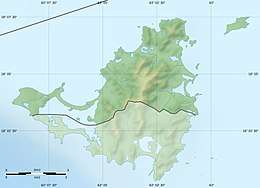 Saint Martin | |
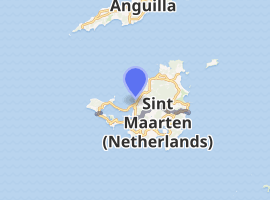
| |
| Location | Marigot Collectivity of Saint Martin |
|---|---|
| Coordinates | 18°04′15.8″N 63°05′11.5″W |
| Construction | masonry tower |
| Tower shape | cylindrical frustum tower with light |
| Markings / pattern | white tower |
| Tower height | 10 metres (33 ft) |
| Focal height | 20 metres (66 ft) |
| Light source | solar power |
| Range | white: 11 nautical miles (20 km; 13 mi) red: 7 nautical miles (13 km; 8.1 mi) green: 7 nautical miles (13 km; 8.1 mi) |
| Characteristic | Fl WRG 4s. |
| Admiralty number | J5658 |
| NGA number | 14732 |
| ARLHS number | STM-001[1][2] |
History and features
Originally a fishing village on a swamp for which it was named, Marigot was made capital during the reign of King Louis XVI, who built Fort St. Louis on a hill near Marigot Bay. Today, that building is the most important in Marigot.
Marigot is typical of Caribbean towns, with gingerbread houses and sidewalk bistros. Market days are every Wednesday and Saturday morning. The crew of the 1997 motion picture Speed 2 shot the final scene here where the Seabourn Legend hits the island.
The St. Martin of Tours' Church on rue du Fort Louis was built in 1941.[3]
Geography
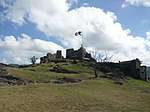
Marigot is located on the west coast of the island of St. Martin. It extends from the coast to the west, along the Bay of Marigot and the hills of the interior of the island to the east. On the south-west it is bounded by the Simpson Bay.
Climate
Marigot has a tropical savanna climate (Köppen Aw), with very warm to hot and humid weather throughout the year.[4] Rainfall – which is reduced by the rain shadow of the mountains to the east – is not as extreme as in most climates of this type, with the peak occurring from August to November due to hurricanes.
| Climate data for Marigot | |||||||||||||
|---|---|---|---|---|---|---|---|---|---|---|---|---|---|
| Month | Jan | Feb | Mar | Apr | May | Jun | Jul | Aug | Sep | Oct | Nov | Dec | Year |
| Average high °C (°F) | 28 (83) |
28 (83) |
28 (83) |
29 (84) |
30 (86) |
31 (88) |
31 (88) |
31 (88) |
31 (88) |
31 (87) |
29 (85) |
28 (83) |
30 (86) |
| Average low °C (°F) | 24 (75) |
24 (75) |
24 (75) |
25 (77) |
26 (78) |
27 (80) |
27 (80) |
27 (80) |
27 (80) |
27 (80) |
26 (78) |
24 (76) |
26 (78) |
| Average rainfall mm (inches) | 74 (2.9) |
48 (1.9) |
43 (1.7) |
79 (3.1) |
99 (3.9) |
71 (2.8) |
84 (3.3) |
110 (4.5) |
120 (4.6) |
99 (3.9) |
120 (4.6) |
91 (3.6) |
1,038 (40.8) |
| Source: Weatherbase[5] | |||||||||||||
Transport
The city is served by Princess Juliana International Airport as well as L'Espérance Airport. There is a ferry to Blowing Point, Anguilla.
References
- San Martin The Lighthouse Directory. University of North Carolina at Chapel Hill. Retrieved 27 January 2017
- List of Lights, Pub. 110: Greenland, The East Coasts of North and South America (Excluding Continental U.S.A. Except the East Coast of Florida) and the West Indies (PDF). List of Lights. United States National Geospatial-Intelligence Agency. 2016.
- "The Catholic Church in Marigot". www.stmartinisland.org. Retrieved 2017-02-04.
- "Marigot, Saint Martin Köppen Climate Classification (Weatherbase)". Weatherbase.
- "Weatherbase: Historical Weather for The Valley, Anguilla". Weatherbase. 2011. Retrieved on November 24, 2011.
External links

- Saint Martin Tourist Guide
- www.geographia.com, St Martin